The Mud Bath
David Bomberg
1914
Image
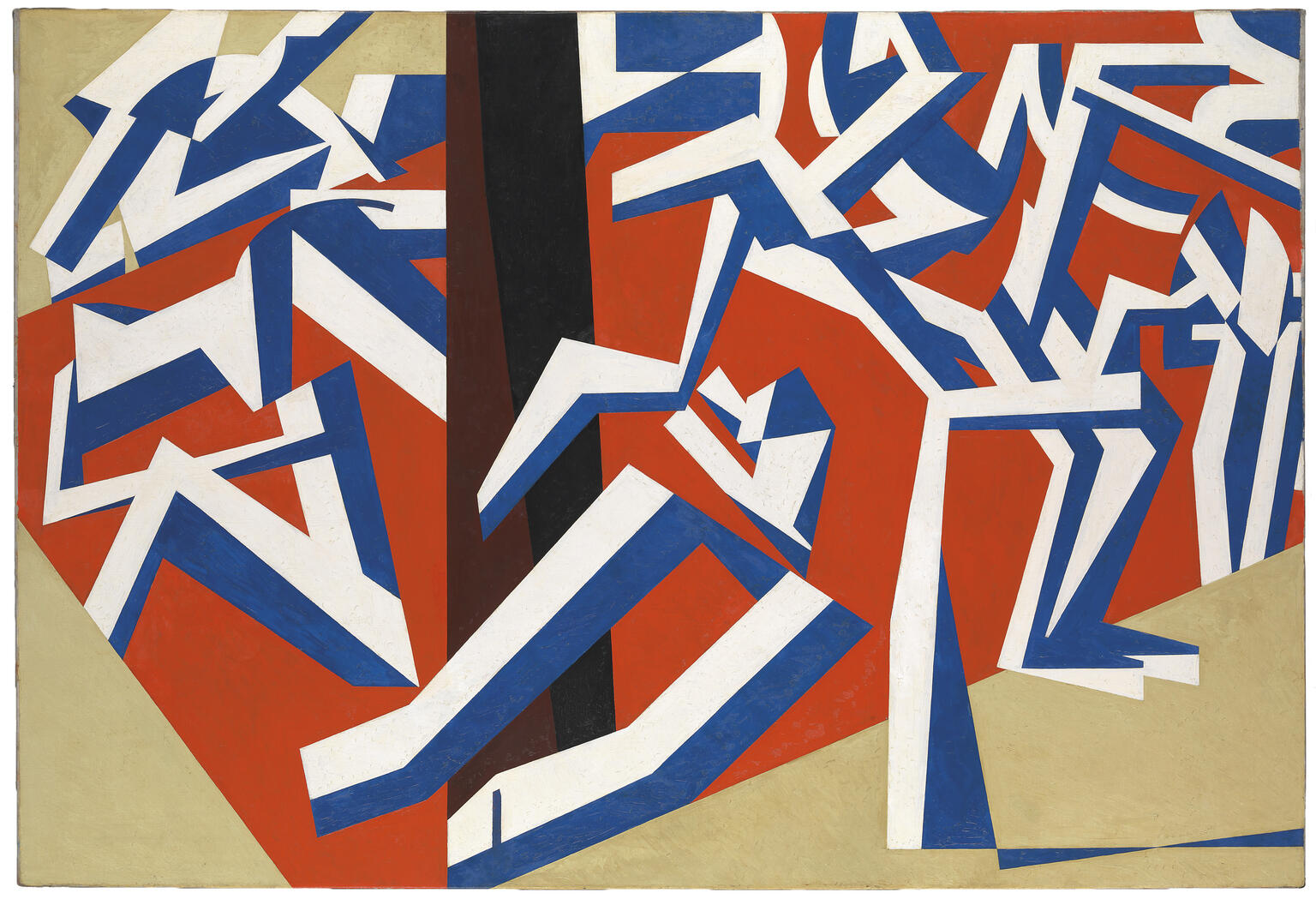
Engage with this Source
Creator Bio
David Bomberg
1890–1957
The painter David Bomberg was one of the “Whitechapel Boys,” the cohort of British Jewish writers and painters who emerged from the immigrant quarter of East London in the early twentieth century. He studied at the Slade School of Fine Art from 1911 to 1913 but was expelled for the radicalism of his style, which was influenced by Italian futurism and cubism. After the war, his style changed, and he began to focus on landscapes. From 1923 to 1927, he painted and sketched in Mandate Palestine with the financial support of the Zionist movement. He is considered one of the great painters of twentieth-century Britain.
You may also like
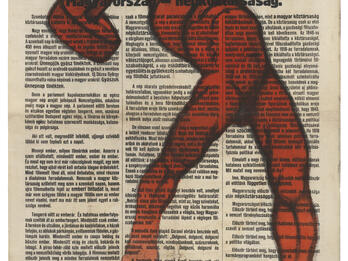
Red Hammer Man with Chains
Red Hammer Man (which debuted in 1912) was used on posters during Hungary’s 1919 revolution and was reproduced over the years as a key figure of socialist propaganda. The heroic figure wielding a…
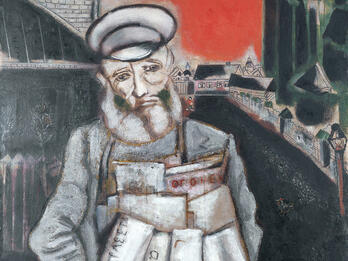
The Newspaper Vendor
Marc Chagall’s newspaper vendor, whose pouch holds both Yiddish and Russian newspapers, looks worried. The sky is an alarming red, and the news is not good. The first world war has begun. Chagall…
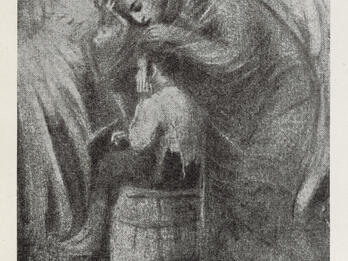
The Lad Bialik
Ira Jan created this hagiographical depiction of her lover Chaim Nahman Bialik being anointed by angels as a child shortly before she was deported by Ottoman authorities to Egypt. Her romantic…
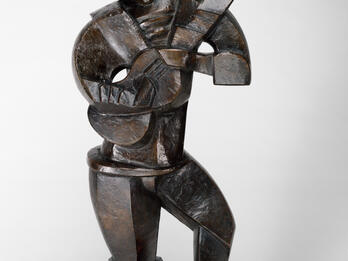
Sailor with Guitar
Sailor with Guitar is one of Jacques Lipchitz’s early cubist sculptures, an experiment in translating painterly cubist concepts into three dimensions. The figure of the sailor was inspired by sailors…
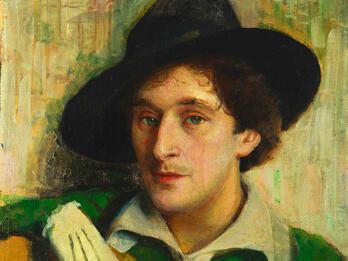
Portrait of Marc Chagall
Yehudah Pen painted this portrait of Marc Chagall soon after Chagall returned to Vitebsk from Paris in order to marry his sweetheart, Bella. While he was there, World War I broke out, and Chagall was…
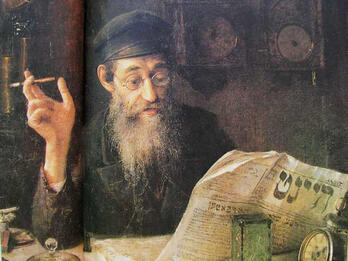
The Watchmaker
Like other paintings by Yehudah Pen, The Watchmaker depicts an encounter between a traditional Jew and modernity. Here, a traditionally dressed watchmaker reads the Warsaw Yiddish newspaper Haynt…

